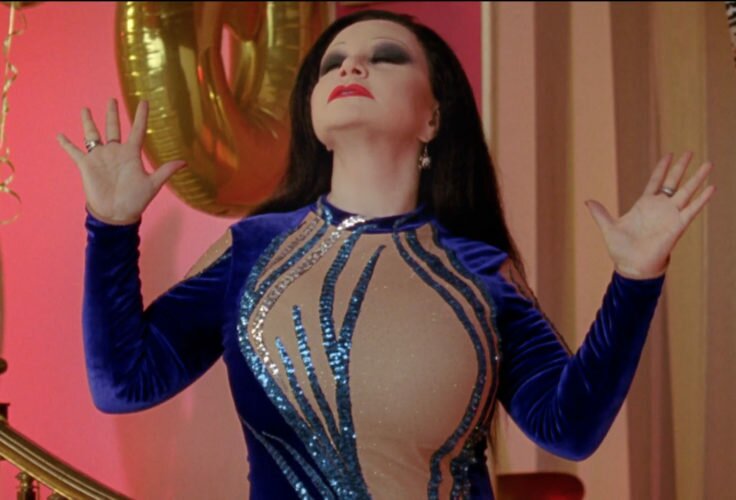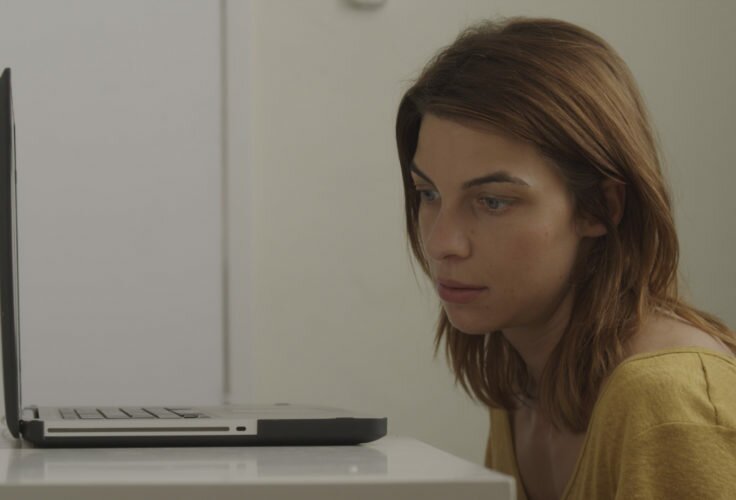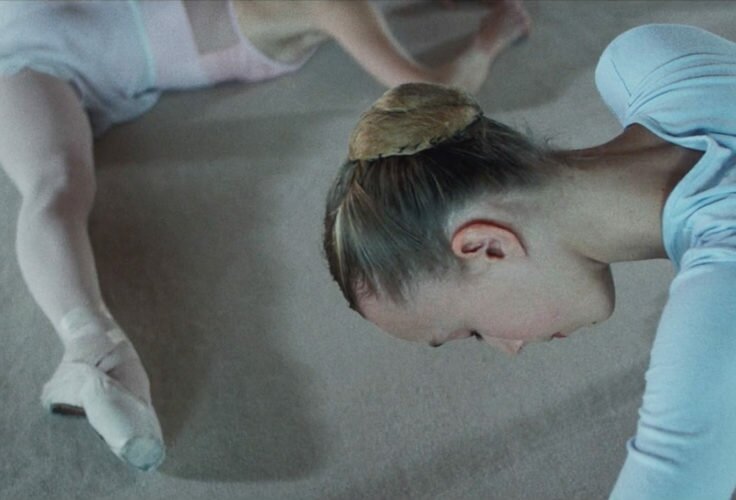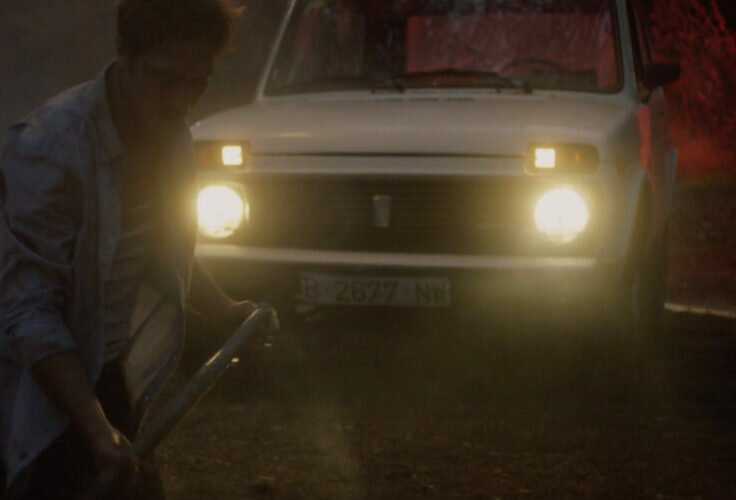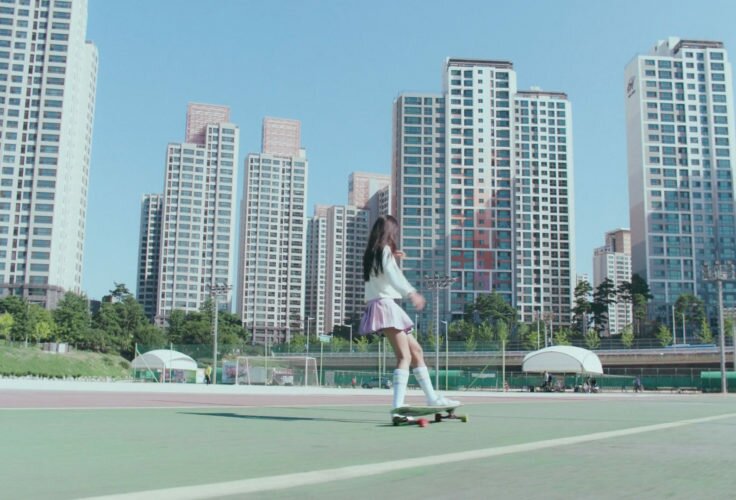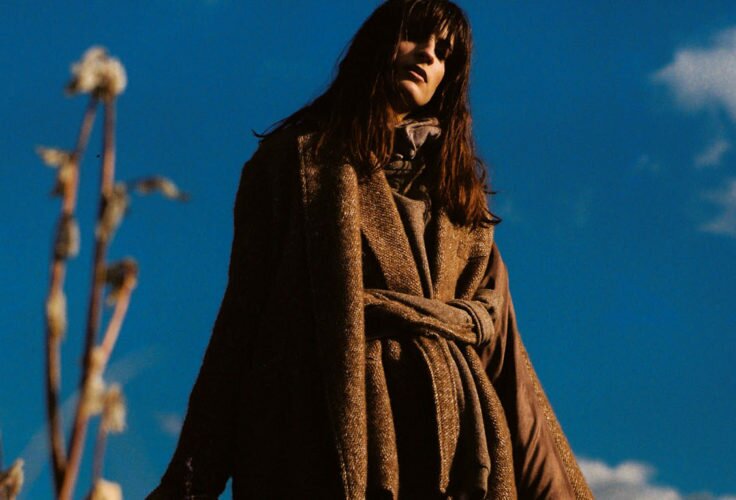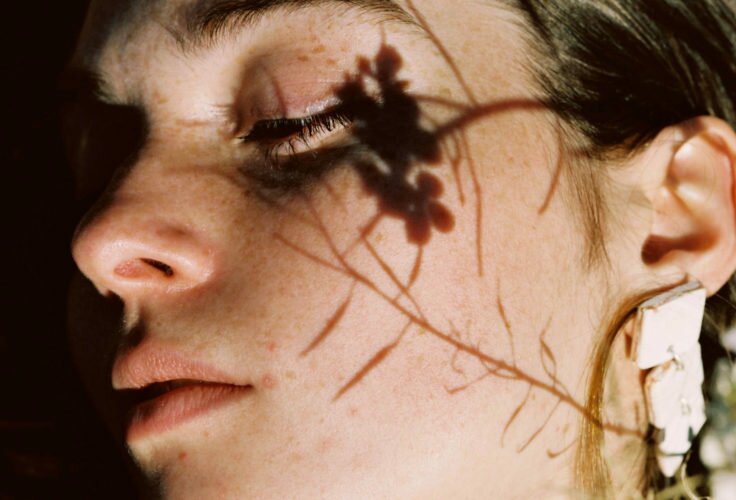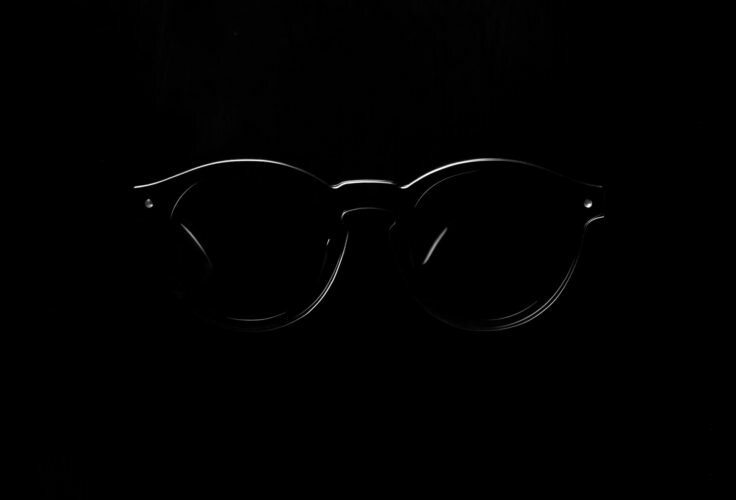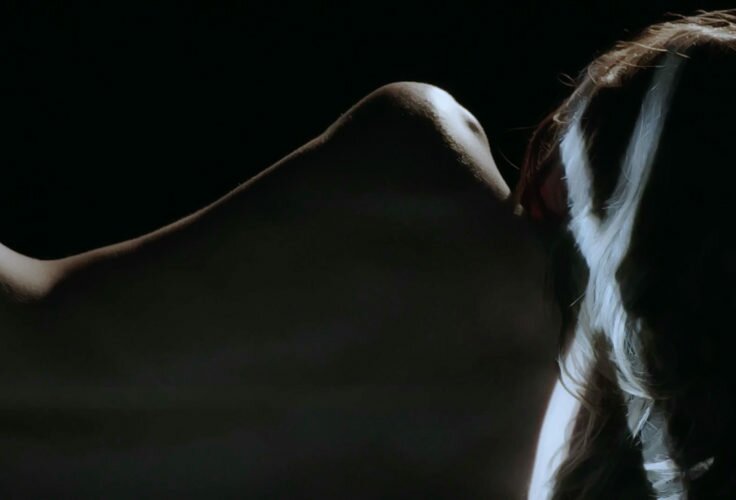What if Francesca Woodman had a Tumblr account? According to Déborah García she’s find the ideal infinite space for her photographs.
INSTAGRAM BEFORE INSTAGRAM. The series I’m trying to compile is based on pre-Instagram photography, and by pre-Instagram I mean photographs taken before the Internet era. I would like, however, to approach this kind of photography using the language we reserve for the digital context, by the means of #hashtags, to describe the expressions of different and very concrete artists, themes or genres that are very popular on the net today.
By Déborah García
#SELFIE #ME




I’ve always wanted to compile a series on this topic. Doing it is remembering, and that’s what we do when we place ourselves in front of our phone to take infinite photographs, send them via WhatsApp or upload them to Instagram. I’ve always wanted to do this series, to create a kind of archaeology of the hashtag, of the label, and of travelling. Initiating a trip of the gesture, see who did it before, retrieve them and, after that, reaching some conclusions. Deciding on the selfie as my first option was choosing the king of all Instragram tags. It was the most used in 2016: #selfie, #me, #myself, #selfportrait… In the infinite scroll we find ourselves, I wanted to retrieve the same gestures of those who had taken photographic self-portraits, because both in photography and painting, artists haven’t resisted the temptation of portraying themselves.



Why do I repeat the gesture? What makes me take a picture of me? What makes everybody want to photograph themselves and upload their faces on social networks? The selfie phenomenon takes us back to the times of Tell el-Amarna, when Bak, sculptor of pharaoh Amenophis IV and his wife Nefertiti, sculpted on a piece of quartzite his own face and that of his wife Taheri. For some strange reason, I think of Ed van der Elsken photographing himself on the mirror, with his wife, leaving his own signature on his work. I quickly remember another of his photographs with his wife where they appear with a black cat and a photo of mine where I appear with my girlfriend and our cat comes to mind. The gesture rests under the rest. Nothing seems new, or old, but only buried, appearing almost instinctively and linking us all in the way we interact with ourselves and with the rest of the world.

I feel compelled to mention painting in passing, not in vain were first paint and then photography the art forms that popularised self-portraits, to the point that there’s no artist who hasn’t portrayed him/herself at least once. All artists, independently of the art form chosen, have used self-portraits at one point or another.
What pictorial and photographic artists explored self-portraits and would have been able to exploit tags such as #me and #selfie? I think of Jan van Eyck when he placed himself in The Arnolfini Portrait, on a mirror, behind the couple. In the same way that his “Johannes de Eykc fuit hic” (that is, “Jan van Eyck was here”) reveals the presence of the painter, I automatically see on the picture the way in which Vivian Maier portrayed herself on her photographs, sometimes as a reflection, others as a shadow, but always introducing her own figure as a fundamental part of her work. The nanny photographer that has been considered in later years one of the main instances of street photography never ceased to photograph herself. In that same style of self-portrait-as-signature we can understand the subtle presence of Imogen Cunningham.


Self-portrait is an exploration, a revelation, and ultimately a creation. Catharsis, discovery, or a wish for self-affirmation are the motives behind the infinitely repeated gesture of standing in front of the mirror and immortalizing oneself.

#CATHARSIS #EXPLORATION #AFFIRMATION #DAVIDNEBREDA #FRIDAKAHLO #SCHIELE
Self-portraits seem to arise from some ancestral rite in which a person’s doppelganger is thrown into the fire to burn and thus conjure all demons. This is what some portraits seem to suggest.



I think of the works of Egon Schiele, and above all of the works of Frida Kahlo, who lying in bed could see, thanks to a mirror placed on the ceiling, her eternally ill body. Frida found in self-portraits a way of exploring and exorcising her suffering, a kind of therapy. I think of the work of an artist from Madrid, David Nebreda, no need to use any epithets to refer to him here. I won’t mention a single one of those he has used to vindicate, or rather sell, himself, or his work. Independent from him, his portraits, his harmed body, his faeces and burns show how Nebreda’s photography, despite his being isolated from the world (the photographer lives without any contact to the external world) can communicate with a very concrete type of Instagrammers that turn their anorexia, their body and thinness, into the centre of their virtual galleries.

#VIVIANMAIER #ME
#IMMOGENCUNNINGHAM #SELFIE #SELF-PORTRAIT
#MYSHADOW #LEEFRIEDLANDER
During the sixties of the 20th century, Lee Friedlander covered, with his street photography, a multiplicity of subjects, but among them we can no doubt highlight his very personal self-portraits. Like Vivian Maier, Friedlander showed himself on the reflection of metallic surfaces or included his own shadow in the framing. His own presence within his images was his signature. Although he was a master in many photographic genres, and his covers for Atlantic Records and portraits of jazz musicians are mythical, he never stopped capturing self-portraits. In the same way, other photographers such as László Moholy-Nagy, André Kertész and Lotte Stam-Beese explored their inclusion on their images. The silhouette introduced on the pictures went from being a mistake to a sign of affirmation of the artist. Friedlander’s shadow works in his pictures as a sort of doppelganger, or alter ego, fused with women, plush toys, furniture, or even the vegetation at Grand Canyon, Arizona. Shadow is no doubt the most interesting element in Friedlander’s self-portraits, something that turn a beginner’s common error1 into a sublime and interesting leitmotiv.

1. In the first years of the 20th century, the appearance of a shadow on a photograph was considered a lack of ability on behalf of the photographer. Indeed, already in 1905 there was already a general yearbook compiling these kinds of errors.
#EXPLORATION
#CELEBRITIES
#2.0 #WARHOL
#ALBERTDURER
#GUSTAVECOURBET
And not only as signature… Self-portraits have also served as consolidation for the artist and have given shape to what the artist was meant to become. The artist has always been conscious of the power s/he had to project her/himself. When it comes to painters, the clearest example is Dürer, who seemed to be imbibed by his own image. He explored it for years to the point that he became the model for Christ on his own work Man of Sorrows. Dürer, like James Franco or Justin Bieber today, used self-portraits as a kind of self-promotion, and it’s probably this kind of self-portrait the one that is best translated to social networks, that idealisation and dramatization, that kind of extreme poetic reading of the image.

MODE BEAUTY ON, 100%
In the 19th century, Courbet painted a series of allegories about the life of the author in which he represented himself in an imaginary terrain, as though he had photoshopped his image to place himself in different situations in the same way than today many anonymous selfies are pasted to celebrity selfies. And let’s not forget Rembrandt, who didn’t idealise or projected himself, only painted his own image. This is me, this is who I am. In Rembrandt’s self-portraits we can follow the physical and psychical evolution of the painter. It’s an exploration of his being; his paintings are witnesses of the passing of life on his own canvas-body.

Rembrandt shares with Dürer the use of their own selves as models, their self-portraits were meant for formal experimentation. However, painting after painting, their more than fifty works show their lives as if they were their Instagram galleries.

We’re witnesses to the changes occurring in their lives: riches, clothes, women, youth, old age and, finally, illness. Rembrandt salutes James Franco, Justin Bieber, salutes them all, salutes the Kardashians, presents himself as an actor performing time and time again his own existence. Masters of photography such as Robert Mapplethorpe, Andy Warhol or Claude Cahun personified throughout the 20th century these tableaux vivants that could be already sensed in Rembrandt’s Self-portrait in Oriental Costume. A theatricality that I can also find, even more so than in those great names cited above, in the photography of Cindy Sherman, in those self-portraits she doesn’t consider as such. Her way of mocking gender stereotypes and US topics is also very current today.

From this portrait trying to explore comes another kind of selfie that is more general in our digital day to day, a selfie I refer to as garbage, not because it doesn’t have any value, but because it presents itself as waste, a picture you take without thinking, almost automatically, and then share. A picture the only value of which is to state that you are uploading a selfie at that time, on that day, what’s called an autobiographical-self-portrait, a portrait related to a trend obviously more widespread (even though easier to get today in our technological times) and to the work of painters like Van Gogh and photographers like the Basque Esther Ferrer2.

2. The work Self-portrait in Time, developed between 1981 and 1999, is a good example. Composed by twelve photographic compositions, each with two halves of the face of the artist united in the middle, conceived as a work in progress, it’s developed with images dating from five different years in which the artist has photographed her face so that the left and right halves are combined, each corresponding to a different moment. The image on each photograph occurs at a concrete time, but also a concrete space. Uniting before and after she shows us the decay provoked by life, how time transforms us, how a person, despite being the same and preserving similar features, changes, is modified, with only her identity remaining unaltered, showing how we grow old in a visible way.
#cahun
#Vangogh
#sherman
#schiele
#fontcuberta
If there’s something clear at this point is that from the self-promotion searched by Dürer to Nebreda’s catharsis or Sherman or Cahun’s will to break with stereotypes, beyond Van Gogh’s wish to register himself and Schiele’s narcissism, self-portraits are a means of communication. We need to communicate. We need to see something of ourselves everywhere, that’s why we sneak into mirrors, that’s why we freeze that moment in which we catch our image on a rear-view mirror or a tram window. The way in which the selfie has been transformed isn’t even an evolution, simply an adaptation to the medium, and no one better than Joan Fontcuberta3 to show us and to close this article:
“A playful and self-exploratory will prevails above memory. Taking pictures and showing them in social networks is part of the game of seduction and the ritual of communication of the new post-photographic urban subcultures no one, even though they’re lead by youngsters and teenagers, can escape. Photographs no longer capture memories to be stored, but messages to be sent and exchanged: they become pure gestures of communication the pandemic dimension of which obeys to a wide range of motivations. Millions of people hold the camera and face their double in the mirror: looking at oneself and reinventing oneself, seeing oneself and not recognizing oneself. Even if paradoxically we hide ourselves when we show our image, the mere fact of posing implies at the same time placing us in a mise-en-scène and showing a mask: self-portraits can, thus, question the hypothetical sincerity of the camera.”





